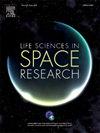Recent discoveries related to the habitability and astrobiological relevance of the outer Solar System have expanded our understanding of where and how life may have originated. As a result, the Icy Worlds of the outer Solar System have become among the highest priority targets for future spacecraft missions dedicated to astrobiology-focused and/or direct life detection objectives. This, in turn, has led to a renewed interest in planetary protection concerns and policies for the exploration of these worlds and has been a topic of discussion within the COSPAR (Committee on Space Research) Panel on Planetary Protection. This paper summarizes the results of those discussions, reviewing the current knowledge and the history of planetary protection considerations for Icy Worlds as well as suggesting ways forward. Based on those discussions, we therefore suggest to (1) Establish a new definition for Icy Worlds for Planetary Protection that captures the outer Solar System moons and dwarf planets like Pluto, but excludes more primitive bodies such as comets, centaurs, and asteroids: Icy Worlds in our Solar System are defined as all bodies with an outermost layer that is believed to be greater than 50 % water ice by volume and have enough mass to assume a nearly round shape. (2) Establish indices for the lower limits of Earth life with regards to water activity (LLAw) and temperature (LLT) and apply them into all areas of the COSPAR Planetary Protection Policy. These values are currently set at 0.5 and -28 °C and were originally established for defining Mars Special Regions; (3) Establish LLT as a parameter to assign categorization for Icy Worlds missions. The suggested categorization will have a 1000-year period of biological exploration, to be applied to all Icy Worlds and not just Europa and Enceladus as is currently the case. (4) Have all missions consider the possibility of impact. Transient thermal anomalies caused by impact would be acceptable so long as there is less than 10−4 probability of a single microbe reaching deeper environments where temperature is >LLT in the period of biological exploration. (5) Restructure or remove Category II* from the policy as it becomes largely redundant with this new approach, (6) Establish that any sample return from an Icy World should be Category V restricted Earth return.


